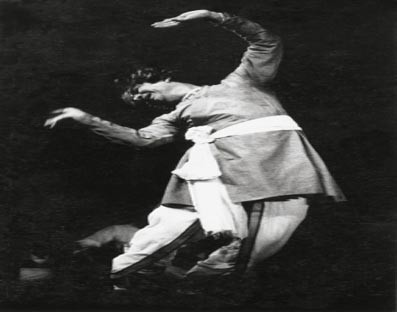
New Delhi, For dancer Sonal Mansingh, it is still tough to believe that Pandit Birju Maharaj is no more. "It will take time to absorb the fact that he is physically no longer with us. Of course, his legacy will live on, thanks to his unmatched contribution to the art form," she said.
Stressing that he was a complete artist -- for whom Kathak was a vehicle, Mansingh recalled in a conversation with IANS, "He played different instruments, sang beautifully and had been instrumental in looking at Kathak with a very 'out of the box' vision. I still remember his jugalbandis with other prominent masters which were awe-inspiring."
Remembering their friendship, where there was mutual respect and admiration for each others' journeys, this Padma Bhushan and Padma Vibhusan awardee said: "In the 80s, my friends threw a birthday party for me, and he also came. He sang and cracked jokes. His presence was always warm. He would keep inviting me to the festivals he organised and vice-versa."
Shobha Deepak Singh, Director of New Delhi's Shriram Bharatiya Kala Kendra, learnt dance from him, and also observed and photographed him extensively for decades. For her, Pandit Birju Maharaj's passing away marks the end of an era.
"I had been closely associated with him since the early '50s. We all know about him as an unparalleled performer. As a teacher, what was especially peculiar was the fact that he would not rest until you got the minutest movement right. There were just no shortcuts with him. Everything would stop unless he was satisfied with your dedication," Singh said.
She added: "I remember him telling me to take his photographs for a calendar. And I am so thankful for that opportunity. After all, I got to look and capture him not just in his grand avatar, but also in some of the most candid moments which were so profound."
From Chandigarh, Shobha Koser, founder of the Pracheen Kala Kendra, pointed out: "We must remember that while there have been some great classical dancers, very few have been able to produce students of such stellar quality. Pandit Birju Maharaj always understood his responsibility of giving back."
Koser added: "Also, his methodology was about doing everything properly. If you were his student, there was no chance that you could get away with superficiality. He was always conscious about the fact that his gharana's name should always shine."
Theatre director Neelam Mansingh Chowdhry remembers him as someone for whom life and art did not fall in two distinct compartments. The Padma Shri awardee director remembers him from their days at the Bharat Bhavan in Bhopal and the National School of Drama (NSD), which the late dancer would also frequent.
"I would sometimes just sit and see him interact with the students. The sessions would be intense, but always with a certain air of informality. One would meet him at different festivals and art conferences, he would forever be in his 'abhinaya mudra'," she said.
"Seeing him on the stage was of course an otherworldly experience," Mansingh continued. "It was as if God had descended. His nuances and pauses are unforgettable. He could seduce even by that slight sound of his ghungroos."
Interestingly, a young contemporary dancer like Delhi-based Puneet Jewandah, who trained in New York, believes that Pandit Birju Maharaj's approach and philosophy towards the art form has taught multiple things to dancers like her.
"Let's not forget that he was a classical dancer with a contemporary vision. He broke so many fixed ideas and that point of intersection is very interesting for me as a contemporary dancer," Jewandah said.
She concluded by pointing out: "Also, how he honed his technique to develop classical thought further simplified the form and changed how classical dancers perceived the idea of a body in motion. His ideas were never fixated and there was constant evolution. If you see some of his choreographed pieces, they reflected the times he lived in."


.jpeg)

